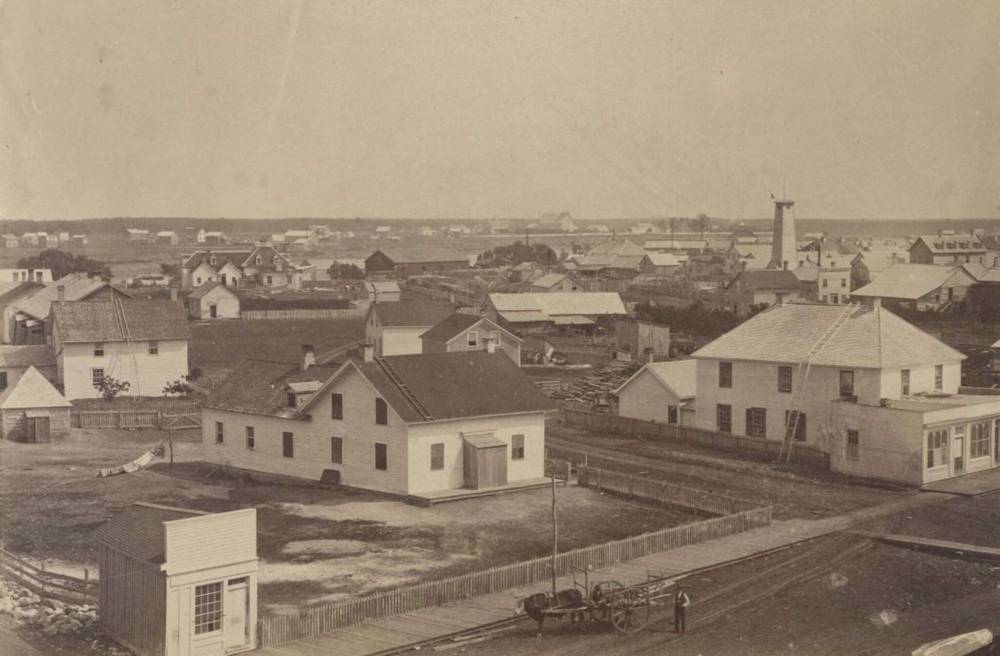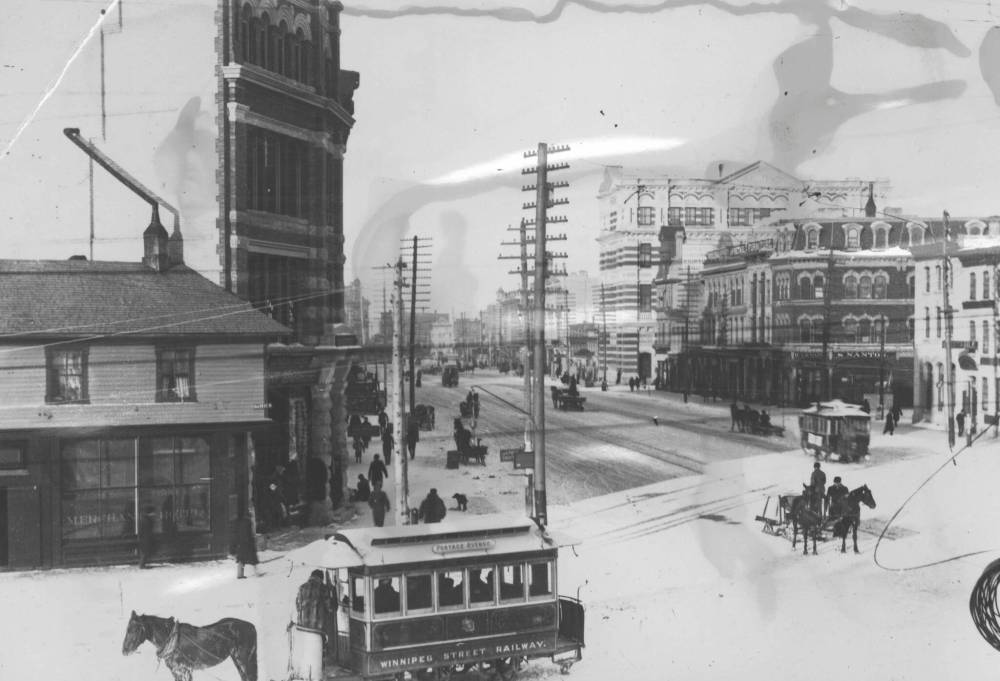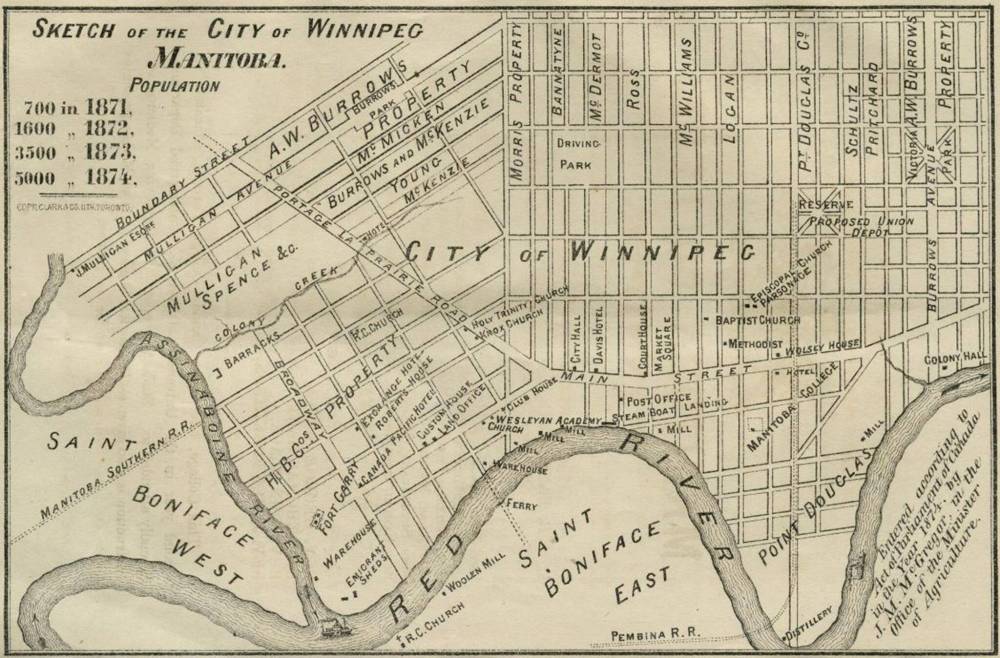Winnipeg 150 celebration plans take shape
Advertisement
Read this article for free:
or
Already have an account? Log in here »
To continue reading, please subscribe:
Monthly Digital Subscription
$0 for the first 4 weeks*
- Enjoy unlimited reading on winnipegfreepress.com
- Read the E-Edition, our digital replica newspaper
- Access News Break, our award-winning app
- Play interactive puzzles
*No charge for 4 weeks then price increases to the regular rate of $19.00 plus GST every four weeks. Offer available to new and qualified returning subscribers only. Cancel any time.
Monthly Digital Subscription
$4.75/week*
- Enjoy unlimited reading on winnipegfreepress.com
- Read the E-Edition, our digital replica newspaper
- Access News Break, our award-winning app
- Play interactive puzzles
*Billed as $19 plus GST every four weeks. Cancel any time.
To continue reading, please subscribe:
Add Free Press access to your Brandon Sun subscription for only an additional
$1 for the first 4 weeks*
*Your next subscription payment will increase by $1.00 and you will be charged $16.99 plus GST for four weeks. After four weeks, your payment will increase to $23.99 plus GST every four weeks.
Read unlimited articles for free today:
or
Already have an account? Log in here »
Hey there, time traveller!
This article was published 08/11/2023 (752 days ago), so information in it may no longer be current.
Main Street was a wide, muddy road and horses remained a key mode of transportation when the City of Winnipeg started up.
About 2,000 people lived in the roughly five-square-kilometre site that became incorporated Nov. 8, 1873 — 150 years ago Wednesday.
Now, city officials are digging through local archives to share them with the public and celebrate that history.
“In (a past) time capsule, we have photographs of Winnipeg in 1875. There’s (also) a jar of grasshoppers… and there’s also a box of damaged wheat and it’s showing damage from the grasshoppers. It’s just one of the examples of some of the challenges of Winnipeggers in 1875, what they were dealing with. (There were) grasshoppers, plagues and scourges on the Prairies,” said Sarah Ramsden, a senior city archivist.
Horse-drawn street cars emerged amid demands for wooden-plank sidewalks.
CITY OF WINNIPEG Winnipeg was incorporated as a city in 1873. At the time, it had a population of around 2,000 people. Winnipeg was only five-square kilometres when it was incorporated.
“One of the reasons for incorporation was to have central responsibility for local improvements, responsibility for putting in sidewalks and for cleaning up our city,” said Ramsden.
Winnipeg is now preparing to mark its 150th anniversary Jan. 19, 2024, when the first meeting of city council took place.
Videos will focus on Indigenous stories and history, a candlelight service will acknowledge veterans’ families at Brookside Cemetery and a presentation of Winnipeg 150 medals will honour “outstanding Winnipeggers,” amid other celebrations.
The city will also give out grants of up to $5,000 each, for a total of up to $50,000, to help organizations create their own Winnipeg 150 projects. (Applications are available at winnipeg.ca/150years.)
Ramsden said a new time capsule will be created next year, which is slated to be opened in 2074, which will include items marking the 150th anniversary.
For now, she said the event marks a great opportunity for Winnipeggers to learn about their city’s past.
CITY OF WINNIPEG Winnipeg Street Railway on Portage Avenue in front of Merchants Hotel circa 1886.
A new digital exhibit (winnipeginfocus.winnipeg.ca) shares early council documents and images, including notes on the task of determining how best to remove a dead horse that was dumped just off Main Street and how to address “repeat” election voters, since a loophole at the time allowed residents to vote once per property owned.
One Winnipeg 150 project is already in the works.
Heritage Winnipeg plans to release a keepsake, soft-cover Winnipeg 150 book in January that offers a chronological look at how the city grew over time.
“Through the eyes of the buildings, (we’re) telling the story of how the city developed,” said executive director Cindy Tugwell.
Tugwell said the population soared prior to the First World War, sparking the construction of many elaborate buildings and head offices within its expanding boundaries. That building boom was later interrupted by an economic downturn.
CITY OF WINNIPEG An 1874 map of Winnipeg’s city limits. It grew exponentially in the next hundred years, especially after the arrival of the railway.
“We’ve had some good times in this city and, Lord knows, we’ve had some bad ones, but we’re resilient,” said Tugwell.
Mayor Scott Gillingham said Indigenous history will be a prominent part of celebrating the past and present.
“There’s a lot more work to do (toward reconciliation). What I’m excited about is some of the tangible acts of reconciliation that are (already) taking place, including economic reconciliation,” said Gillingham.
He cited the Manitoba Métis Federation’s work to create a heritage centre at 355 Main St. and the Southern Chiefs’ Organization’s transformation of the former Hudson’s Bay flagship store downtown into a mixed-used project with retail and housing as critical steps to ensuring the city’s “shared future.”
“There’s a lot more work to do (toward reconciliation). What I’m excited about is some of the tangible acts of reconciliation that are (already) taking place, including economic reconciliation,”–Mayor Scott Gillingham
In 2023, as Winnipeg’s population draws closer to 800,000, Gillingham said homelessness is one its greatest present-day challenges.
“As we celebrate Winnipeg 150 right now, we’ve got too many individuals, too many Winnipeggers who are struggling… We need more housing built in our city right now.”
Meanwhile, as a legacy project to mark the city’s first 150 years, funding has been approved to renovate the Carnegie Library (380 William Ave.) to house the city’s archives.
A $12.7-million renovation plan is expected to allow the archives to return to the building constructed in 1905, which housed them before it was badly damaged by flooding from a 2013 rainstorm. Current plans call for construction to start next year and the archives to return from a leased warehouse at 50 Myrtle St. by 2026.
joyanne.pursaga@freepress.mb.ca
X: @joyanne_pursaga

Joyanne is city hall reporter for the Winnipeg Free Press. A reporter since 2004, she began covering politics exclusively in 2012, writing on city hall and the Manitoba Legislature for the Winnipeg Sun before joining the Free Press in early 2020. Read more about Joyanne.
Every piece of reporting Joyanne produces is reviewed by an editing team before it is posted online or published in print — part of the Free Press‘s tradition, since 1872, of producing reliable independent journalism. Read more about Free Press’s history and mandate, and learn how our newsroom operates.
Our newsroom depends on a growing audience of readers to power our journalism. If you are not a paid reader, please consider becoming a subscriber.
Our newsroom depends on its audience of readers to power our journalism. Thank you for your support.



